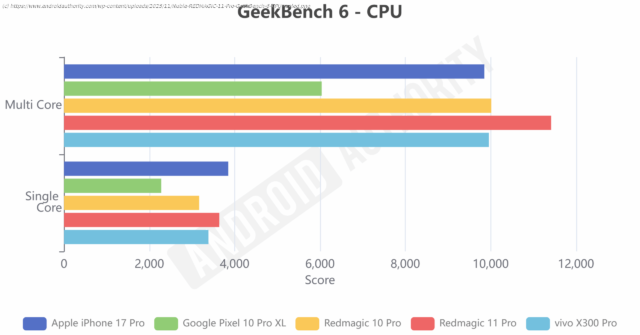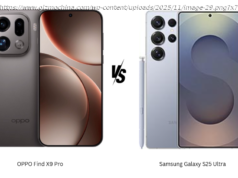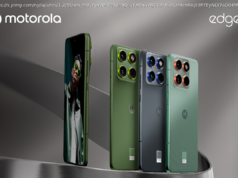Qualcomm’s new Snapdragon 8 Elite Gen 5 has finally arrived in retail handsets, and while it’s fast, it’s not quite as quick as promised.
The first flagship smartphones packed with the new Snapdragon 8 Elite Gen 5 chipset are already here. After an impressive showing in a reference phone, we can finally test how Qualcomm’s latest piece of flagship silicon stacks up in retail handsets and whether Qualcomm retains the performance crown for another year.
We have the new Nuvia REDMAGIC 11 Pro in for today’s benchmarking session — a dedicated gaming phone boasting advanced cooling, 144Hz display, and up to 24GB of RAM. It should represent one of the best implementations of the 8 Elite Gen 5, but we’ll let the results do the talking. I tested with Nuvia’s gaming mode enabled and disabled, and obtained higher performance from the latter. In contrast, the gaming mode prioritized lower temperatures and power draw, so I left it disabled.
Starting with the CPU via GeekBench 6, we can see that the Snapdragon 8 Elite Gen 5’s custom Oryon CPU cores continue to blow past the competition. It leaves Google’s Pixel 10 Pro XL in the dust, but that was to be expected. Compared to last year’s REDMAGIC 10 Pro sporting the original Snapdragon 8 Elite, the Gen 5 inside the latest REDMAGIC sports a 15% gain in single-core CPU performance and a 14% uplift in multi-core scores.
That’s a solid gain, but not quite the 20% improvement that Qualcomm claimed in its launch marketing material. Still, it’s enough to keep its custom CPU cores ahead of the new Arm C1-Ultra inside MediaTek’s Dimensity 9500. In this CPU benchmark, the REDMAGIC is 7.5% faster in single-core and 14.7% faster in multi-core tests than the vivo X300 Pro.
However, the iPhone 17 Pro’s A19 Pro CPU comes out marginally ahead in single-core CPU scores, posting 3,843 versus 3,641 — a 5% win for Apple.






